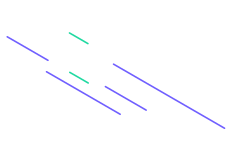





Name
Chamberlain University
NR-304: Health Assessment II
Prof. Name
Date
Before beginning the assessment, the nurse introduces themselves and ensures patient comfort. The nurse greets the patient, performs hand hygiene, and introduces themselves as a student nurse. The nurse then verifies the patient’s first and last name, as well as their date of birth. Privacy is provided, and the purpose of the head-to-toe assessment is explained, including its estimated duration of 20–30 minutes. The nurse confirms patient consent and inquires about allergies. Pain level is assessed using a 0–10 scale, followed by adjusting the bed to hip level and lowering the side rail.
The patient displays no signs of acute distress in the face or chest. Their facial expression is relaxed, mood and affect are appropriate, and speech is clear. To evaluate orientation, the nurse asks the patient to state their name, location, time of day, and reason for being there. The patient is alert and oriented to person, place, time, and situation (A&O x4).
The skin is inspected and found to be of appropriate ethnic tone without lesions, wounds, or incisions. Palpation of both upper and lower extremities reveals warm, even temperature bilaterally. Nail inspection shows pink, slightly curved nails with a 160° curvature. Capillary refill is less than 2 seconds.
The facial features are symmetrical, and the head is normocephalic. After hand hygiene and applying gloves, the scalp is inspected and palpated, showing cleanliness, moisturized hair, and even distribution without lesions or infestations. Gloves are then removed and hand hygiene repeated. The trachea is midline with no masses.
| Cranial Nerve | Assessment | Findings |
|---|---|---|
| V (Trigeminal) | Jaw clenching, chin resistance, and cotton ball test for sensation | Intact |
| VII (Facial) | Eye closure, eyebrow raise, smile, puffed cheeks, pout | Intact |
| XI (Spinal Accessory) | Shoulder shrug and head rotation against resistance | Intact |
The external ocular structures show no redness or discharge. The conjunctiva is pink and the sclera is white. Pupils are equal, round, and measure 3 mm, with brisk reaction to light. Accommodation is intact, demonstrated by constriction and convergence when following a penlight.
| Cranial Nerve | Assessment | Findings |
|---|---|---|
| III (Oculomotor) | Six cardinal fields of gaze | Intact |
| IV (Trochlear) | Six cardinal fields of gaze | Intact |
| VI (Abducens) | Six cardinal fields of gaze | Intact |
No nystagmus is present.
The external auditory meatus shows no discharge. The whispered voice test is conducted from two feet away, with the patient correctly repeating the sequences bilaterally. Cranial nerve VIII (Vestibulocochlear) is intact.
The nasal passages show no deformities, asymmetry, inflammation, or drainage. Bilateral patency is confirmed when the patient alternately occludes one nostril while breathing through the other.
The lips, tongue, and gums are pink and moist. The uvula and soft palate rise at midline upon phonation, swallowing, and speaking, indicating intact cranial nerves IX (Glossopharyngeal) and X (Vagus). A tongue depressor is used to assess gag reflex. Cranial nerve XII (Hypoglossal) is intact as demonstrated by articulation of the phrase “light, tight, dynamite.”
Inspection reveals unlabored respirations without accessory muscle use. Auscultation of anterior and posterior lung fields reveals vesicular and bronchovesicular breath sounds in appropriate lobes, with no adventitious sounds noted.
Carotid, radial, posterior tibial, and dorsalis pedis pulses are palpated, all with regular rhythm, force of +2, and a rate of 72 beats per minute bilaterally. No edema is observed. Cardiac auscultation is performed with both the diaphragm and bell of the stethoscope at the aortic, pulmonic, Erb’s point, tricuspid, and mitral landmarks. No murmurs are detected.
The abdomen is flat and symmetrical. Auscultation in all four quadrants reveals normal bowel sounds. Light palpation shows no tenderness, rigidity, guarding, distention, or masses.
Upper and lower extremity joints are inspected bilaterally. The elbows, wrists, knees, and ankles are symmetrical with no swelling, deformities, or masses. Active range of motion (flexion, extension, pronation, supination, dorsiflexion, plantar flexion, inversion, and eversion) is demonstrated by the patient with strength graded 5/5 against resistance. Sensation is intact with 2-point discrimination testing. The patient demonstrates a steady gait when walking in a straight line.
The patient’s pain is reassessed on a 0–10 scale. The bed is returned to its lowest position, side rails are raised, and the bed is locked. The call bell is placed within reach. The nurse asks the patient if they have any questions, thanks them for their cooperation, and completes hand hygiene.
Jarvis, C. (2020). Physical examination and health assessment (8th ed.). Elsevier.
Lewis, S. L., Bucher, L., Heitkemper, M. M., Harding, M., & Kwong, J. (2023). Medical-surgical nursing: Assessment and management of clinical problems (12th ed.). Elsevier.
Potter, P. A., Perry, A. G., Stockert, P., & Hall, A. (2021). Fundamentals of nursing (10th ed.). Elsevier.